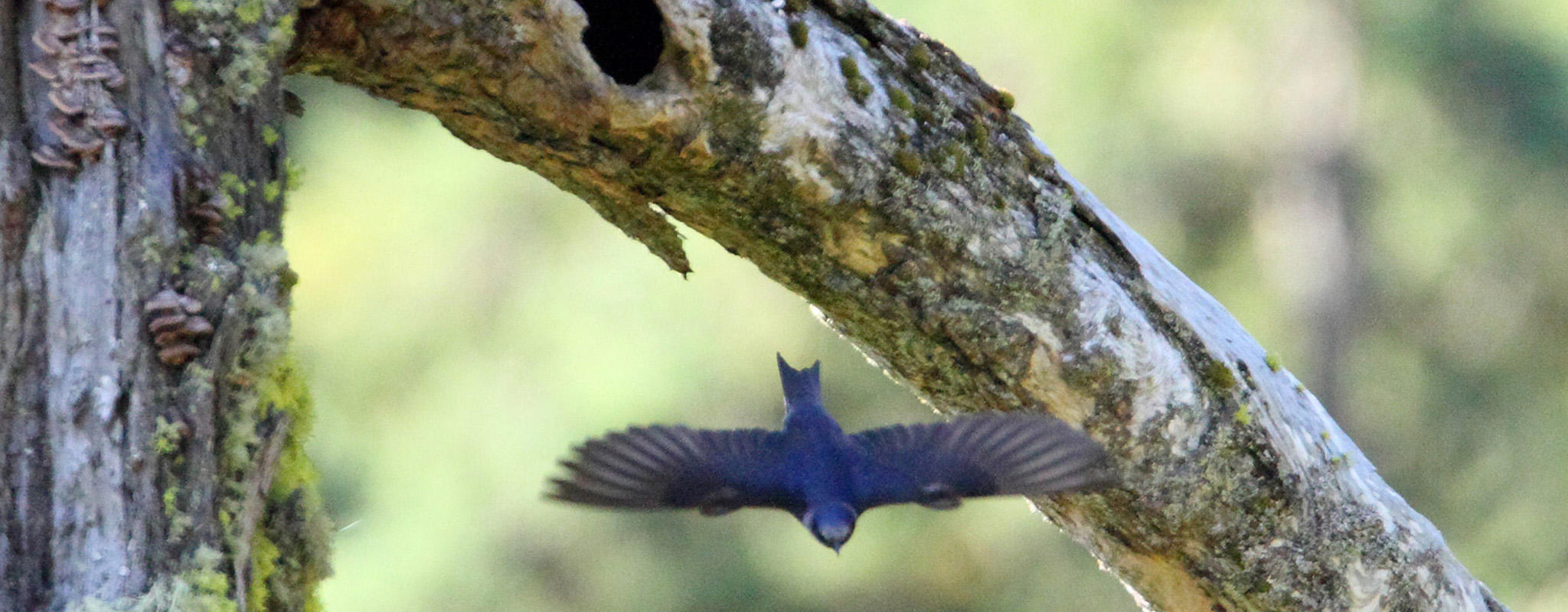Researchers: Joan Hagar, David Vesely, Lorelle Sherman
Study Objective: Evaluate purple martin use of artificial and natural nest sites in regeneration harvest units.
Summary: The western sub-species of the purple martin is designated as a “critical” sensitive species in the state of Oregon because of concern that the population may decline to the point of qualifying for threatened or endangered status if conservation actions are not taken. Availability of suitable breeding habitat is a major limiting factor for western purple martin populations. As aerial insectivores, purple martins require open habitat with high insect productivity for foraging. They also depend on cavities in dead trees (snags) for nesting. Therefore, suitable habitat is defined by the presence of snags in areas where forest cover has been removed by disturbance, such as fire or timber harvest. The combination of early seral forest with snags in upland forests of western Oregon is relatively rare. Intentional creation of snags from live trees retained at harvest is one way to provide the essential combination of nesting substrate in early seral habitat for purple martins.
The OSU Research Forest has been cooperating with USGS and Oregon Wildlife Institute in a study of purple martin use of artificial and natural nest sites in regeneration harvest units. The goals of the project are 1) to bolster purple martin populations by providing artificial nest sites in harvest units where suitable natural nest cavities were unavailable; 2) to quantify characteristics of created snags used by purple martins for nesting; 3) to examine the potential of purple martins to transfer from artificial to natural nest sites; and 4) document dispersal patterns among purple martin colonies by tracking marked birds.
Publications:
- Sherman, L., and Hagar, J. 2021. The snag’s the limit: Habitat selection modeling for the western purple martin in a managed forest landscape. Forest Ecology and Management 480: 118689. https://doi.org/10.1016/j.foreco.2020.118689
- Sherman, L.M. 2019. Habitat Associations and Diet Composition of Western Purple Martins in Western Oregon. Graduate Thesis
- Vesely, D. 2014. Conserving Purple Martins in OSU’s McDonald-Dunn Research Forest: Final Project Report

Gourd rack on the 670 Clear unit on the McDonald Forest, showing created snags in the background, June 2017.

Purple martins at gourd rack in Dunn Forest (130 Rd.) summer 2017.
